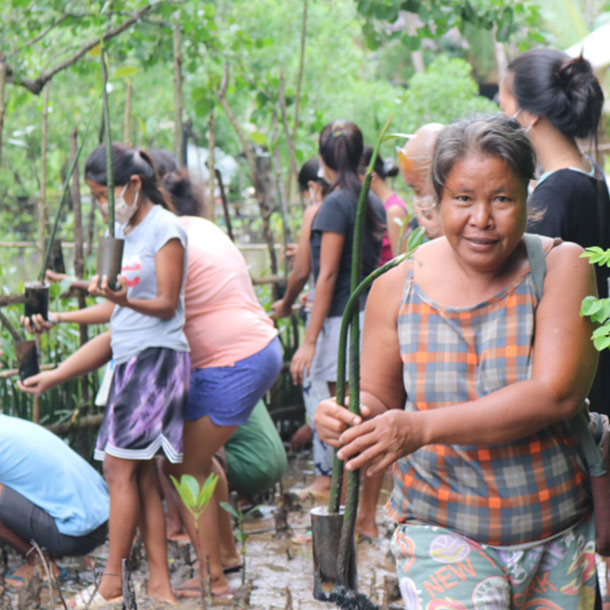The COVID-19 pandemic has upended the already dismal state of women and girls particularly those living in rural areas as restrictions to mobility have further reduced their access to healthcare, education, and other social and ecosystem services.
Especially in geographically isolated and disadvantaged areas (GIDA), women and girls more than ever find it more difficult to get medical care, as well as sexual and reproductive health services. Many young people also stopped studying because of the online or modular set-up, or their parents can no longer support them financially. Moreover, resource-dependent households such as fishers and farmers and women-headed families have experienced hunger due to loss of jobs and livelihoods.
Aggravating these challenges are gender norms and culture that put women and girls more compromised, restricting their potentials as catalysts and leaders of rural development.
The COVID-19 pandemic exposed the vulnerabilities of women and girls in rural areas. They needed to assume bigger responsibilities to meet the basic needs of their families. The burden on women was more pronounced with the increased hours of unpaid care work with families staying mostly at home and exposure to violence against women and exploitation of girls have also worsened with the pandemic.
The current realities highlight the interconnected dynamics of population, environment and development issues, emphasizing the need for integrated rather than siloed approaches such as population, environment and development (PED) to addressing these issues and concerns.
Transitioning to the “new normal,” now is the best time to invest in critical measures towards a bluer and green recovery by addressing the immediate socio-economic needs and welfare of women and girls amidst the pandemic. Specifically, improve women’s access to family planning and reproductive health services. This empowers women to plan their families and can better manage the overall health of their household members during lockdowns. They can also be more productive at work, become more involved in their communities, and continue to send their children to school or assist them with schoolwork at home.
Another measure is to promote inclusivity for women to take on key roles and responsibilities in conservation efforts where they are invisible despite their contributions. Build women’s capacity to be economically productive. Uphold women’s aspiration for a better future for their children by supporting their children to get better education. With more girls and boys in school, they will have an improved chance of pursuing higher education and finding decent jobs in the future, making them more economically productive. This will also reduce families’ reliance on lands, fisheries, and forestry resources, giving these ecosystems more time to regenerate—also to the benefit of communities that rely on them.
It is likewise vital to put in place structures, policies and systems that will ensure gender equality in home affairs and in community development and governance that provide rural women especially those in agriculture, fisheries and forestry value chain opportunities and a voice in leadership roles and decision-making process.
The International Rural Women’s Day honors the importance of rural women in our recovery from the pandemic towards healthier and more resilient women and ecosystems. It is important to recognize their contributions to nation-building and provide them with the resources, tools and platforms they need to optimize their capacities and actively claim their stake in the development of their communities and country.

